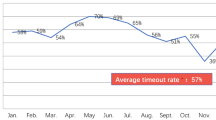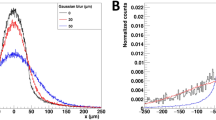Abstract
DR. A. HOLMES and Dr. R. W. Lawson in their paper on “The Radioactivity of Potassium and its Geological Significance” (Phil. Mag., Dec. 1926, p. 1218) have estimated the heating effect of potassium by multiplying the average energy of the emitted β-ray by the number emitted per second. The energy can be obtained from the β-ray absorption coefficient, and the number emitted per second from the half value period. From the best data at the time available, they decided that the energy was 7.3 × 10−7 erg, and the half value period 1.5 × 1012 years; that is, about 225 β-rays are emitted per second per gram of potassium.
This is a preview of subscription content, access via your institution
Access options
Subscribe to this journal
Receive 51 print issues and online access
$199.00 per year
only $3.90 per issue
Buy this article
- Purchase on SpringerLink
- Instant access to full article PDF
Prices may be subject to local taxes which are calculated during checkout
Similar content being viewed by others
Author information
Authors and Affiliations
Rights and permissions
About this article
Cite this article
JOLY, J. The Geological Importance of the Radioactivity of Potassium. Nature 126, 953 (1930). https://doi.org/10.1038/126953b0
Published:
Issue date:
DOI: https://doi.org/10.1038/126953b0



